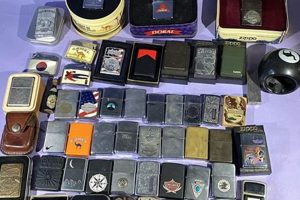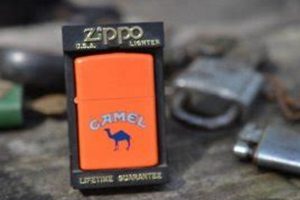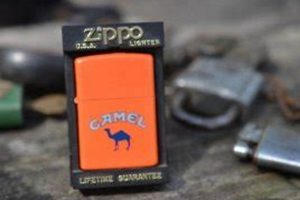Authentic lighters from this iconic American brand are invariably stamped with the company’s name. This marking, typically found on the bottom of the case, serves as a primary indicator of authenticity and includes details like the place of manufacture and often a date code. Counterfeit lighters frequently lack these precise markings or bear inaccurate reproductions.
The consistent branding plays a crucial role in maintaining brand integrity and combating counterfeiting. It allows consumers to readily identify genuine products, ensuring they receive the expected quality and durability. This practice, established decades ago, has become a hallmark of the brand, contributing to its enduring reputation and collector value. The markings themselves provide a historical record, allowing collectors and enthusiasts to trace the lineage of specific pieces.
This emphasis on clear identification extends to other aspects of these products, including packaging and associated accessories. Understanding these details enables consumers and collectors to confidently discern authentic items, preserving the brand’s legacy and value. Further exploration of these aspects will provide a deeper understanding of the company’s commitment to quality and authenticity.
Tips for Authenticating Lighters
Verifying authenticity protects against counterfeits and ensures expected quality and collectible value. The following tips provide guidance for confirming genuine products.
Tip 1: Examine the Bottom Stamp: A genuine product will feature a crisp, clear bottom stamp indicating the brand name, “Zippo,” along with the manufacturing location (Bradford, PA) and a date code. Counterfeit stamps often appear blurred, misaligned, or contain errors.
Tip 2: Inspect the Case: Authentic cases exhibit precise construction and a consistent finish. Counterfeits may have uneven surfaces, gaps, or inferior plating.
Tip 3: Listen for the Click: The distinctive “click” of an authentic insert is difficult to replicate. Counterfeit inserts often produce a duller or inconsistent sound.
Tip 4: Verify the Insert: The insert should also bear the brand name and exhibit high-quality construction. Look for consistent markings and a snug fit within the case.
Tip 5: Check the Packaging: Authentic products are packaged in distinctive boxes with proper labeling and branding. Counterfeit packaging often appears cheap or displays inconsistencies.
Tip 6: Consult Authorized Retailers: Purchasing from authorized retailers ensures authenticity and provides recourse if issues arise.
Tip 7: Research Date Codes: Familiarizing oneself with date code systems allows for accurate verification of a product’s manufacturing period, further aiding in authentication.
By carefully considering these factors, consumers can confidently identify genuine products, protecting their investment and ensuring they receive the quality and performance associated with the brand’s legacy.
Through these authentication measures, the value and historical significance of these iconic lighters can be preserved.
1. Brand Protection
Consistent marking of lighters with the “Zippo” trademark plays a vital role in brand protection. This practice directly combats counterfeiting, a significant threat to established brands. Counterfeit goods not only erode market share but also damage brand reputation through inferior quality and performance. By consistently marking products, the company establishes a clear identifier of authenticity, empowering consumers to distinguish genuine products from imitations. This protects the brand’s reputation for quality and reliability, a crucial asset built over decades. For example, the presence of a clear, correctly formatted bottom stamp immediately differentiates a genuine lighter from a counterfeit, which might lack the stamp entirely or bear an inaccurate reproduction.
Furthermore, the consistent application of trademarks supports legal recourse against counterfeiters. The trademark provides legal grounds for action, enabling the company to protect its intellectual property and pursue legal action against those who infringe upon it. This active defense against counterfeiting demonstrates a commitment to quality and reinforces consumer trust. The markings themselves become a form of consumer protection, providing a tangible means of verification. This ultimately strengthens brand loyalty and preserves market share against counterfeit competition. Consider the impact on a consumer who unknowingly purchases a counterfeit lighter; a negative experience with a subpar product can erroneously tarnish the perception of the genuine brand.
In conclusion, the practice of marking every product serves as a cornerstone of brand protection strategy. It provides a readily accessible method of authentication for consumers, strengthens legal action against counterfeiters, and preserves the brand’s hard-earned reputation for quality. The consistent marking, therefore, functions not just as a brand identifier but as a critical component of a broader strategy to maintain market position, protect intellectual property, and ensure customer satisfaction. The absence of such a system would leave the brand vulnerable to counterfeiting, potentially undermining consumer confidence and diluting brand equity.
2. Counterfeit Detection
Counterfeit detection relies heavily on the consistent marking of genuine Zippo lighters. The presence of the “Zippo” mark, coupled with specific details like date codes and manufacturing location, provides a baseline for authentication. This consistent branding transforms into a powerful tool against counterfeiting, enabling consumers and collectors to readily identify imitations. Counterfeiters often fail to reproduce these markings accurately, exhibiting flaws in stamp clarity, placement, or information. For instance, a counterfeit lighter might lack a date code entirely or display an incorrect font, revealing its inauthentic nature. The absence of these precise markings serves as an immediate red flag, highlighting the importance of verifying these details during purchase.
The connection between counterfeit detection and consistent marking becomes evident in the practical application of authentication. A careful examination of the bottom stamp, comparing it to established references for genuine markings, provides a crucial first step in identifying potential counterfeits. Furthermore, inconsistencies in other aspects of the lighter, such as the insert or case construction, can corroborate suspicions raised by a dubious bottom stamp. For example, a counterfeit lighter may exhibit poor-quality plating or a loosely fitting insert, further solidifying its inauthenticity. These details, combined with the absence or misrepresentation of the “Zippo” mark, build a strong case for counterfeit detection. This meticulous process demonstrates the importance of the “are all Zippo lighters marked Zippo” premise in safeguarding consumers from fraudulent products.
In summary, the practice of consistently marking Zippo lighters serves as a critical component of effective counterfeit detection. This deliberate branding strategy empowers informed purchasing decisions, protecting consumers from deceptive practices and preserving the brand’s reputation for quality. The ability to readily differentiate between authentic and counterfeit products contributes significantly to the brands value and longevity. Challenges remain, however, as counterfeiters constantly adapt their techniques. Ongoing education regarding genuine product markings remains essential in combating these evolving threats and ensuring consumers can confidently identify and appreciate authentic Zippo lighters.
3. Bottom Stamp
The bottom stamp stands as the cornerstone of the “are all Zippo lighters marked Zippo” assertion. This small but crucial marking serves as the primary identifier of authenticity, directly addressing the question of whether all genuine products bear the brand’s mark. The bottom stamp’s presence, coupled with its specific characteristics, effectively answers this question affirmatively. It embodies the brand’s commitment to marking every product, creating a clear distinction between genuine and counterfeit lighters. For example, a lighter lacking this stamp, or bearing a poorly executed imitation, would immediately raise suspicion regarding its authenticity. This direct link between the bottom stamp and the overarching branding strategy underscores the stamp’s importance as a verification tool.
Further emphasizing the bottom stamp’s significance, the specific information contained within the stamp provides further levels of authentication. Date codes, factory location, and patent information embedded in the stamp allow for precise identification and verification of a lighter’s production history. This granular level of detail enables collectors and enthusiasts to pinpoint the manufacturing period of a specific lighter, adding to its collectible value and historical context. The bottom stamp, therefore, transcends a simple brand mark; it functions as a historical record, documenting the evolution of the brand and its products. For instance, a lighter bearing a date code from the 1950s would possess historical significance distinct from a lighter manufactured in the 2000s, and the bottom stamp facilitates this distinction. This capacity for detailed identification further solidifies the bottom stamp’s role in the broader context of brand protection and counterfeit detection.
In conclusion, the bottom stamp serves as the tangible manifestation of the “are all Zippo lighters marked Zippo” principle. Its presence, coupled with the specific information it contains, provides a robust system for authentication, protecting consumers from counterfeit products and preserving the brand’s legacy. The bottom stamp, therefore, is not merely a mark; it is a statement of authenticity, a historical record, and a critical tool in the ongoing fight against counterfeiting. Challenges remain in ensuring the accuracy and consistency of these markings, particularly in the face of increasingly sophisticated counterfeiting techniques. However, the bottom stamp remains a vital component of brand integrity, providing a tangible link between the product and the brand’s commitment to quality and authenticity.
4. Mark Variations
While all genuine Zippo lighters are marked, the specific characteristics of these markings have evolved over time. Understanding these “mark variations” is crucial for accurate authentication and adds another layer of depth to the affirmation that all authentic Zippo lighters bear a mark. These variations often reflect changes in manufacturing processes, patent updates, or stylistic choices throughout the company’s history. Analyzing these variations provides valuable insights into a lighter’s production period and contributes to its historical significance for collectors.
- Date Codes
Date codes represent a significant form of mark variation. These codes, stamped alongside the “Zippo” logo on the bottom of the case, indicate the month and year of manufacture. The format of these codes has changed over time, from early periods using a simple number system to later periods employing a combination of letters and numbers. For instance, a lighter with a “|” symbol denotes a lighter made between 1957 and 1965, while the presence of a Roman numeral might signify manufacture between 1986 and 1992. Knowledge of these evolving date code systems is essential for accurate authentication and dating.
- Logo Variations
The “Zippo” logo itself has undergone subtle changes over the decades. Variations in font, size, and spacing can indicate a specific production era. For example, a lighter with a bolder, blockier logo might indicate earlier production, while a lighter with a more streamlined logo might indicate later manufacture. These nuances, though subtle, provide valuable clues for collectors and authenticators seeking to pinpoint a lighter’s origins.
- Placement and Positioning
The precise placement and positioning of the bottom stamp, including the “Zippo” logo, date code, and patent information, can also exhibit variations. The alignment of these elements relative to each other and the edges of the lighter’s base can sometimes indicate specific production periods or manufacturing practices. Observing these details aids in authentication and provides further insights into a lighter’s history.
- Patent Numbers and Wordings
The inclusion and format of patent numbers on the bottom stamp have also varied over time. Different patent numbers reflect specific design features or technological advancements incorporated into the lighter’s mechanism. Similarly, the wording used in conjunction with these patent numbers, such as “Pat. Pending” or specific patent dates, can offer further clues regarding a lighter’s production period and design features.
Recognizing these mark variations is essential for accurate authentication and underscores the importance of the fundamental premise: all genuine Zippo lighters bear a mark. These variations, far from contradicting this premise, enhance its significance by providing a more nuanced understanding of the brand’s history and manufacturing processes. By examining these subtle but meaningful differences, collectors and enthusiasts gain a deeper appreciation for the evolution of this iconic lighter and its enduring legacy.
5. Date Codes
Date codes represent a crucial component of the “are all Zippo lighters marked Zippo” premise. These codes, etched into the bottom stamp alongside the brand name, provide a verifiable link between a specific lighter and its manufacturing date. This systematic marking reinforces the brand’s commitment to identifying every product, directly addressing the question of universal marking. Date codes transform the bottom stamp from a simple brand identifier into a historical record, documenting the lineage of each lighter. This detailed marking system enhances authenticity verification, enabling precise identification and differentiation between genuine products and counterfeits, which often lack accurate or consistent date codes. For instance, a lighter purportedly from the 1960s but bearing a date code inconsistent with that era would immediately raise suspicion regarding its authenticity.
The practical significance of date codes extends beyond mere authentication. They provide collectors and enthusiasts with valuable historical context, enabling them to trace the evolution of Zippo designs and manufacturing techniques across different periods. A lighter bearing a date code from World War II, for example, carries historical weight distinct from a lighter manufactured in the 21st century. This added layer of information enhances the collectible value and provides a tangible connection to the brand’s rich history. Furthermore, date codes can assist in identifying potential manufacturing irregularities or specific production batches associated with particular design features or materials. This granular level of traceability benefits both collectors seeking specific variations and the company in maintaining quality control and addressing potential manufacturing issues. For example, if a specific batch of lighters from a particular year exhibited a known manufacturing defect, the date code would allow for targeted identification and potential recall or repair, demonstrating the practical value of this detailed marking system.
In summary, date codes function as an integral element of the “are all Zippo lighters marked Zippo” concept. They reinforce authenticity verification, providing a powerful tool against counterfeiting. Furthermore, these codes provide valuable historical context, enriching the collectible value and deepening the connection between the product and the brand’s legacy. Challenges remain in ensuring the accuracy and consistency of date code application and interpretation, particularly as counterfeiting techniques become more sophisticated. However, date codes remain a crucial aspect of brand protection and a testament to the company’s commitment to marking every product, providing valuable information for consumers, collectors, and the company itself.
6. Insert Markings
Insert markings represent a significant, albeit often overlooked, aspect of the “are all Zippo lighters marked Zippo” principle. While the bottom stamp serves as the primary authentication identifier, markings on the lighter insert provide a secondary layer of verification, further solidifying the brand’s commitment to marking every component. These insert markings typically include the “Zippo” logo and often a date code corresponding to the insert’s manufacturing period. This practice of marking both the case and the insert reinforces the comprehensive nature of the brand’s marking strategy, addressing the question of universal marking with greater depth. The presence of consistent and accurate insert markings, therefore, strengthens the overall authenticity verification process. For example, a lighter with a genuine bottom stamp but lacking appropriate insert markings, or bearing insert markings inconsistent with the case’s date code, would raise concerns about its authenticity. This interconnectedness between case and insert markings highlights the importance of examining both components during authentication.
The practical implications of understanding insert markings are substantial. Counterfeiters often overlook the details of insert markings, focusing primarily on replicating the more visible bottom stamp. Therefore, discrepancies between the insert and case markings can serve as a crucial indicator of a counterfeit product. For instance, a counterfeit lighter might have a convincing replica of a bottom stamp from the 1950s, but the insert might lack the appropriate markings or bear markings consistent with a more recent production period. This inconsistency exposes the counterfeit nature of the product, highlighting the importance of scrutinizing insert markings during authentication. Furthermore, insert markings provide a more complete picture of a lighter’s history, potentially revealing instances where an original insert has been replaced with a newer one. This information is particularly relevant for collectors seeking all-original lighters.
In summary, insert markings play a vital, albeit often subtle, role in the “are all Zippo lighters marked Zippo” proposition. Their presence strengthens authenticity verification and provides valuable insights into a lighter’s history. The examination of insert markings, in conjunction with the bottom stamp, provides a more comprehensive approach to authentication, protecting consumers from counterfeits and enhancing the understanding of genuine Zippo products. Challenges persist in educating consumers about the significance of insert markings and standardizing these markings across different production periods. However, recognizing the importance of these markings contributes significantly to a more nuanced appreciation of the brand’s commitment to quality and authenticity.
Frequently Asked Questions
This section addresses common inquiries regarding the marking of Zippo lighters, providing clarity on authentication and brand identification.
Question 1: Does the absence of a bottom stamp definitively indicate a counterfeit Zippo lighter?
While the absence of a bottom stamp strongly suggests a counterfeit, other factors should also be considered. Genuine lighters may have worn or damaged bottom stamps due to age and use. A comprehensive examination of other features, such as the insert and case construction, is crucial for accurate assessment.
Question 2: Are there variations in genuine Zippo bottom stamps?
Yes, variations exist due to changes in manufacturing processes and design updates over time. Understanding these variations, including date codes and logo styles, is essential for accurate authentication and historical contextualization.
Question 3: Do all authentic Zippo inserts bear markings?
Authentic inserts typically bear the “Zippo” logo and often a date code. While not as prominent as the bottom stamp, insert markings provide a secondary authentication layer and contribute to a more complete understanding of the lighter’s history.
Question 4: How can one differentiate between a worn genuine bottom stamp and a counterfeit stamp?
A worn genuine stamp, while potentially faint, will typically exhibit consistent characteristics in terms of font, placement, and overall design. Counterfeit stamps often display inconsistencies or inaccuracies in these details, appearing blurred, misaligned, or containing erroneous information.
Question 5: What is the significance of date codes on Zippo lighters?
Date codes provide valuable information regarding the lighter’s manufacturing period. This information is essential for authentication, historical contextualization, and assessing collectible value. It also allows for the tracking of specific production batches and potential manufacturing variations.
Question 6: Where can one find reliable resources for verifying the authenticity of a Zippo lighter?
The official Zippo website offers comprehensive resources for authentication, including detailed information on bottom stamps, date codes, and other identifying features. Collector guides and reputable dealers can also provide valuable expertise in authenticating Zippo lighters.
Careful examination of all available markings and features, combined with consultation of reputable resources, provides the most reliable approach to Zippo lighter authentication.
Further sections will explore the historical evolution of Zippo markings and their significance within the broader context of brand protection and collecting.
Conclusion
The exploration of whether all Zippo lighters bear a mark reveals a multifaceted system of brand protection, historical documentation, and consumer empowerment. The consistent application of markings, including the ubiquitous “Zippo” logo, date codes, and other details, provides a robust framework for authentication, enabling consumers and collectors to readily distinguish genuine products from counterfeits. Mark variations across different production periods offer valuable insights into the brand’s evolution, enhancing collectible value and historical context. Furthermore, the comprehensive marking system, encompassing both case and insert, underscores the brand’s commitment to quality and authenticity.
The question “Are all Zippo lighters marked Zippo?” ultimately serves as a gateway to a deeper understanding of the brand’s legacy and the ongoing efforts to protect its integrity. Continued vigilance in recognizing genuine markings and supporting authorized retailers remains essential in preserving the value and historical significance of these iconic lighters. Through informed purchasing decisions and ongoing education, consumers actively participate in safeguarding the brand’s future and ensuring that the distinctive “click” of a genuine Zippo lighter continues to resonate for generations to come.







